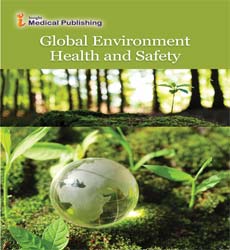Vulnerability of women's livelihoods and their coping mechanisms in the face of climate change in coastal regions of Bangladesh
Bangladesh is frequently cited as a country that is most vulnerable to climate change. In Bangladesh, most of the adverse effects of climate change occur in the form of extreme weather events, such as cyclone, flood, drought, salinity ingress, river bank erosion and tidal surge, leading to large scale damage to crops, employment, livelihoods and the national well-being. Although it is generally stated that women are relatively more vulnerable than men in the context of climate change, few studies have been conducted to closely examine this statement, especially in Bangladesh. The present study, investigates the structure of women’s livelihoods, livelihood vulnerabilities and coping capacity in the context of climate variability and change in a disaster vulnerable coastal area of Bangladesh. Utilizing the concepts of Sustainable Livelihood Framework (SLF) and Disaster Crunch Model (DCM), this study allows for a greater understanding of these issues on the ground. The results show that the distribution of five livelihood capitals (human, natural, financial, social and physical) of women are heavily influenced by several climatic events, such as cyclones that periodically affect the region. Women also face several vulnerabilities in their livelihoods, including income, household assets, health, food security, education, water sources, and sanitation and transportation systems, because of ongoing climate change impacts. The results indicate that it is extremely important to instigate strategies to help build the adaptive capacity of women to reduce the burden created by their livelihood vulnerability. Key Features Presents an analyses-based adaptation to climate change in a holistic way that takes into account social, economic, and environmental stressors and their interrelationships Examines synergy between disaster risk reduction, climate change adaptation, and social protection in the context of Bangladesh Provides examples of successes and failures in climate change adaptation invaluable for developing countries in similar situations Fills a market need by providing a conceptual framework, case studies, and reflections on lessons learned from policy responses Description Experiencing Climate Change in Bangladesh: Vulnerability and Adaptation in Coastal Regions provides a conceptual and empirical framework for understanding the vulnerability of coastal communities in Bangladesh to multiple stressors and presents the process by which rural households adapt their livelihoods. The livelihoods of the poor people in many developing countries are disproportionately vulnerable to multiple shocks and stresses. The effects of climate change interacting with these livelihood disturbances further amplify human vulnerability. Future climate change is likely to aggravate this precarious situation. This book offers a solid framework for analyzing the process and components of adaptation of rural livelihoods to a changing hydro-climatic environment and presents empirical evidence of livelihood adaptation at the local level. The book creates a knowledge-base for the small island developing states (SIDS) experiencing similar socio-economic and climatic conditions. Also fills a market need by providing a conceptual framework, case studies, and reflections on lessons learned from policy responses for vulnerability reduction and adaptation to climate variability, extremes, and change.
Open Access Journals
- Aquaculture & Veterinary Science
- Chemistry & Chemical Sciences
- Clinical Sciences
- Engineering
- General Science
- Genetics & Molecular Biology
- Health Care & Nursing
- Immunology & Microbiology
- Materials Science
- Mathematics & Physics
- Medical Sciences
- Neurology & Psychiatry
- Oncology & Cancer Science
- Pharmaceutical Sciences
